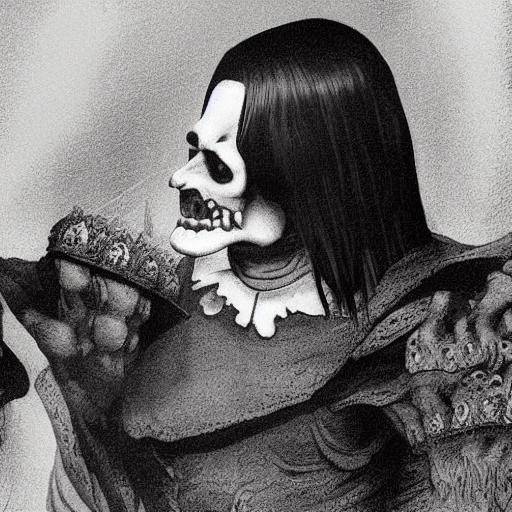
The legendary Dracula has endured over time, fascinating generations with his mystery and thirst for blood. Although his image has been mainly shaped by the famous novel by Bram Stoker, the reality that inspired the creation of this iconic character is equally intriguing. From the infamous prince of Valaquia, Vlad the Emperor, to the mystical region of Transylvania, the history of Dracula is as rich and fascinating as the legend itself. Join us on a journey through the history, mythology and legacy of the world's most famous vampire!
The History of Dracula and its Origen
The Novel that immortalized Dracula
The name Dracula is inscribed on the pages of world literature thanks to the feather of Bram Stoker, whose homonymous novel, published in 1897, catapulted the count of vampire to literary immortality. The work, which merges Gothic elements, terror and romance, led readers since its launch, becoming a cultural icon and an inexhaustible source of inspiration for filmmakers, writers and artists.
Vlad the Emperor: The Sinister Reality behind Dracula
The dark and bloody figure of Vlad III, prince of Valaquia, known as Vlad Tepes or Vlad the Empalador, exerted an inescapable influence on the creation of the character of Dracula. Known for his cruel punishment of his enemies, Vlad the Emperor left an indelible mark in history, earning the nickname of "The Empaler" for his preferred method of execution.
Transylvania: The Scenario of Legends
The mystical landscape of Transylvania, with its dark forests, fortresses and legends of vampires, witches and wolves, has been the perfect setting for the horror narratives that have given life to Dracula. This region of Romania, nestled in the Carpathian Mountains, has captivated the imagination of writers and filmmakers, becoming an icon of the vampire folklore.
Deep Dracula and Legacy Analysis
Perpetual Fascination of the Supernatural
The transcendence of Dracula goes beyond its role as a simple literary character; it embodies the archetype of the vampire in the collective imagination. This creature of the night has captured the imagination of mankind for centuries, serving as a catalyst to explore fears, hidden passions and fascination for the unknown.
Cultural and Artistic Impact
The legacy of Dracula extends to multiple artistic expressions, from cinema, theatre, music, literature and visual arts. The ability of Dracula to adapt to different contexts and media demonstrates its lasting relevance in popular culture, serving as an inexhaustible source of inspiration for artists of all disciplines.
Comparative Analysis: Dracula, Vlad el Empalador y Transilvania
Paralelismos y Contrastes
The figure of Dracula, influenced by the dark history of Vlad the Emperor and the enigmatic atmosphere of Transylvania, reflects a unique interlacing between historical reality and popular mythology. Although Stoker's novel gave Dracula fantastic elements, its connection to the real story and folklore adds layers of complexity to its characterization.
Conclusions and FAQs (FAQs)
Conclusions
Dracula, with its origin in the fusion of history and mythology, embodies the eternal attractiveness of the mysterious and the macabre. His legacy as a literary and cultural icon is intrinsically related to the innermost longings and fears of humanity, making him an immortal character in the panorama of popular culture.
Frequently asked
Did Dracula really exist?
Dracula, as we know it in Bram Stoker's novel, is a fictional character. However, his inspiration comes from the historical figure of Vlad III, Prince of Valaquia, who was known for his cruelty and methods of torture.
What is the influence of Vlad the Emperor in the creation of Dracula?
The figure of Vlad the Empalador served as a historical and character basis for the creation of the Dracula character in the novel by Bram Stoker. His bloodthirsty reputation and method of execution, packing, significantly influenced the characterization of the vampire count.
Is Transylvania really a mysterious and mystical place?
Transylvania, while known for its vampire stories and mysterious atmosphere, is a real region of Romania with a rich history and natural beauty. While its legends are fiction, the region continues to attract tourists in search of its mysterious charm and spectacular landscape.
Why has Dracula survived in the popular imaginary until today?
The perpetual fascination with Dracula lies in its ability to explore the deepest fears of the human being, as well as its adaptability in different artistic and cultural media. His legacy continues to delight and terrorize, maintaining itself as a lasting icon in popular culture.
What is the importance of Dracula in contemporary culture?
Dracula remains a relevant figure in contemporary culture, as it represents a point of union between history, literature, cinema, and folklore. Its influence remains evident in literature, cinema, television, and even in Gothic fashion and related subcultures.
What are some of the best cinematic adaptations in Dracula?
The figure of Dracula has been taken to the screen on numerous occasions, but some of the most outstanding adaptations include the film by Nosferatu (1922), Dracula de Tod Browning (1931), and Interview with Vampiro (1994), among others.
In short, the figure of Dracula, rooted in the intersection between history and legend, transcends time and space, maintaining its attractive and evocative power in global culture. His legacy, nourished by the real history of Vlad the Emperor and the enigmatic aura of Transylvania, continues to influence the collective imagination and contemporary artistic expressions.
